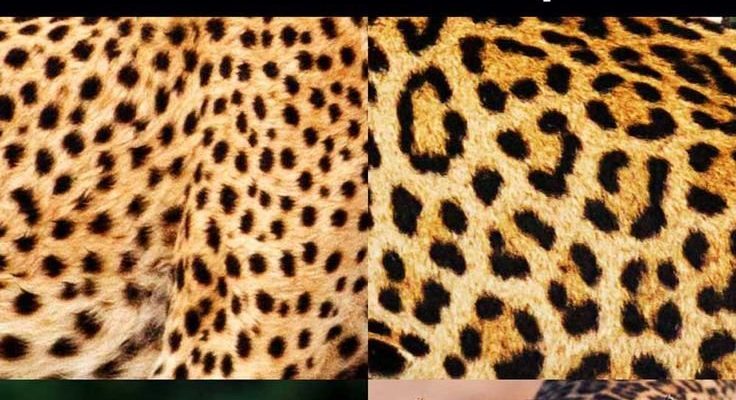![Comparing The Cheetah Vs. [Similar Species]](https://gudri.com/wp-content/uploads/2025/06/Comparing_The_Cheetah_Vs___Similar_Species__image_0.jpg)
In this article, we’ll dig deep into the characteristics, behaviors, and lifestyles of the cheetah and leopard. By the end, you’ll have a clearer understanding of what makes each of these big cats special. So, grab a drink, and let’s settle in for an exploration of these iconic animals!
Physical Differences: Cheetah vs. Leopard
One of the first things to notice when comparing a cheetah and a leopard is their physical appearance. Cheetahs are built for speed, resembling a sprinter on the track. They have a slender body, long legs, and a small head with high cheekbones—a design perfect for achieving incredible bursts of speed. Their signature black tear markings under the eyes help reduce glare, allowing them to focus better on their prey.
On the other hand, leopards are more stocky and muscular. Imagine a powerhouse wrestler compared to a lightweight runner. They have a broad skull and a strong body which allows them to climb and carry heavy prey into trees. The leopard’s beautiful rosette-patterned coat is not just for show; it serves as excellent camouflage in the dappled light of their forest habitats.
To give a clearer comparison, here’s a quick breakdown:
| Feature | Cheetah | Leopard |
| Body Type | Slender and built for speed | Stocky and muscular |
| Coloration | Tan with solid black spots | Golden with rosette patterns |
| Head Shape | Small, high cheekbones | Broad, powerful skull |
Habitat and Range
When we think about where these cats live, it’s clear that they choose different kinds of environments. Cheetahs prefer open grasslands and savannas, where they can spot prey from a distance and make those high-speed chases. Their habitat choices allow them to utilize their incredible speed effectively, darting across long distances with ease.
In contrast, leopards thrive in a more diverse range of habitats. From forests and mountains to grasslands and savannas, their adaptable nature allows them to make homes in various environments. They are excellent climbers and often take their prey up into trees to keep it safe from scavengers, which is a skill that’s particularly useful in dense woodland.
Here’s a thought: this adaptability might be why leopards have such a broad distribution across Africa and parts of Asia. To sum it up, if you want to see a cheetah, head to the open plains; for a leopard, look for a shady tree in the forest.
Hunting Techniques: Speed vs. Stealth
The way cheetahs and leopards hunt shines a light on their different lifestyles. Cheetahs are built for speed, able to reach speeds of 60 to 70 miles per hour in short bursts. They use their incredible eyesight to spot prey during the day, stalking close to their target before bursting into a high-speed chase. This method relies on quick, explosive energy and precision.
In contrast, leopards are stealthy and patient hunters. They rely more on their strength and climbing abilities than speed. A leopard may spend hours sneaking through the brush, using its spotted coat to blend into the environment. Once within striking distance, it pounces with incredible force, often dragging its catch up a tree to keep it safe from other predators.
So, if you’re ever in a situation where you need to hunt something (hypothetically speaking, of course), you might want to consider whether you’re equipped for a sprint or a stealthy approach—just like our feline friends.
Social Behavior and Communication
Social behaviors also differ significantly between cheetahs and leopards. Cheetahs tend to be more social, often found in small groups or “coalitions” of males. These coalitions may consist of brothers who stay together for life, helping each other out in hunts and territory defense. It’s a bit like having your own little support team in the wild!
Leopards, however, are generally solitary creatures. They prefer to roam alone and are territorial. A male leopard will have a larger territory than a female, which he marks with scents to deter others. When females are in heat, they may call to attract males, but outside of that, they keep to themselves.
Understanding these social structures gives us insight into their survival strategies. While cheetahs rely on teamwork and coordination, leopards thrive on their ability to be self-sufficient.
Conservation Status and Threats
In the wild, both cheetahs and leopards face various threats. Cheetahs are classified as vulnerable due to habitat loss and human-wildlife conflict. With fewer open spaces and increased farming, these incredible speedsters are struggling to find suitable habitats. Additionally, their small gene pool makes them more vulnerable to diseases and genetic disorders.
Leopards, while still facing threats like poaching and habitat destruction, are considered near threatened rather than vulnerable. Their adaptability gives them a slight edge, allowing them to survive in a variety of environments. However, as human encroachment continues, their future is uncertain.
It’s important for us to understand these issues, as every species plays a vital role in its ecosystem. Supporting conservation efforts can help ensure that future generations get to witness these magnificent creatures in the wild.
In comparing the cheetah and the leopard, we see two extraordinary examples of nature’s creativity. Each cat has its unique adaptations that allow it to thrive in its respective environment. Cheetahs dazzle us with their speed and grace, while leopards impress us with their strength and stealth.
Here’s the thing: understanding these differences helps us appreciate the complexities of wildlife and reinforces the importance of conservation. So, whether you’re cheering for the lightning-fast cheetah on a savanna or admiring the stealthy leopard in a tree, remember that both contribute uniquely to the beauty of our natural world.

